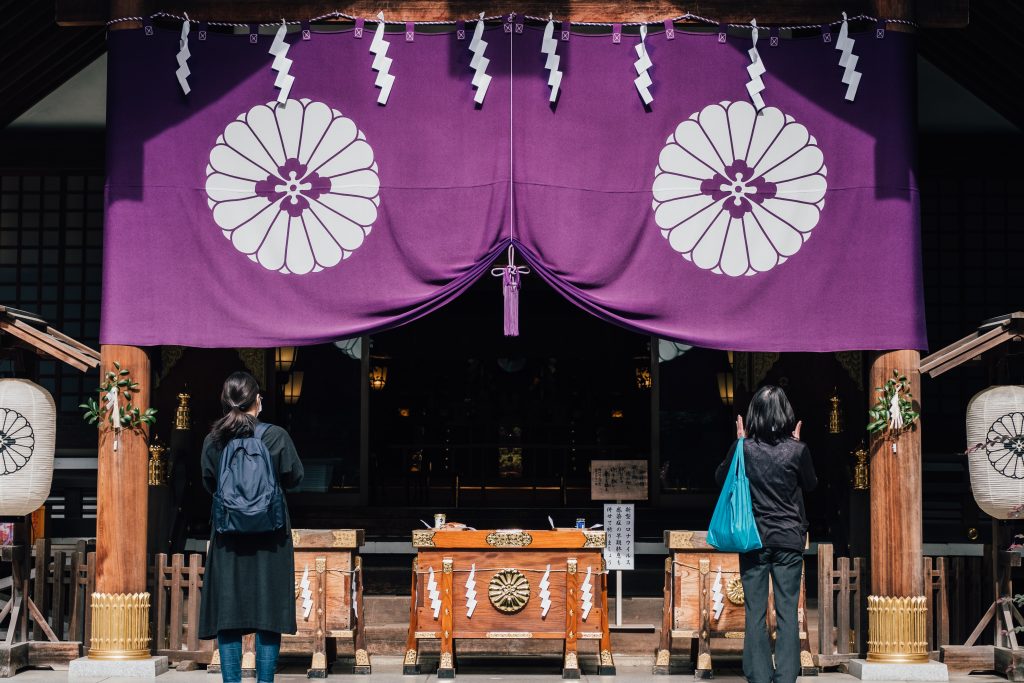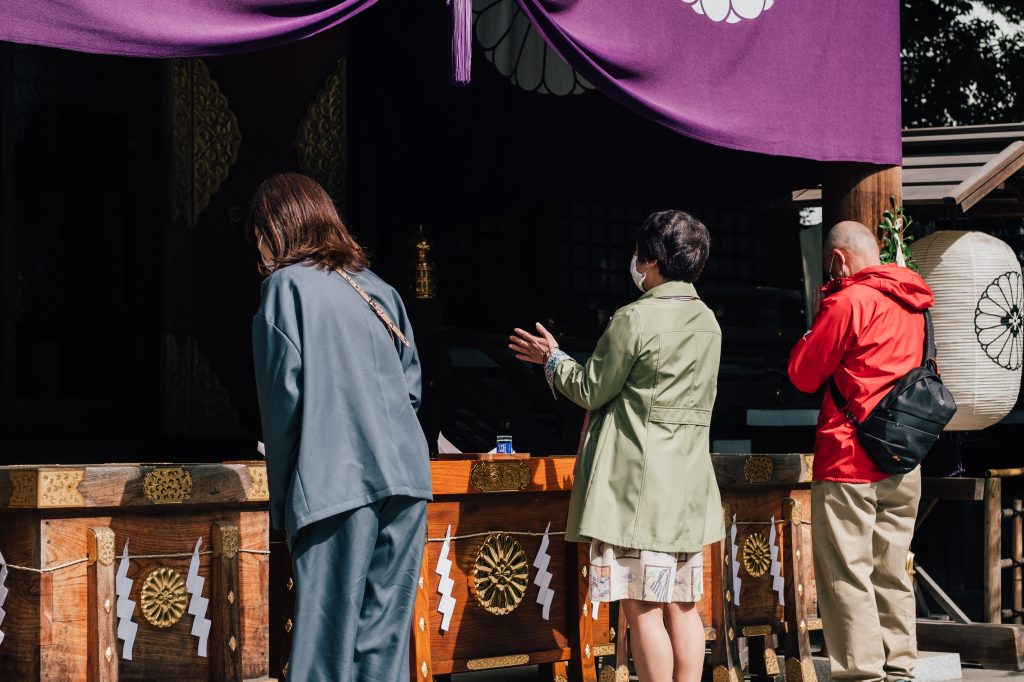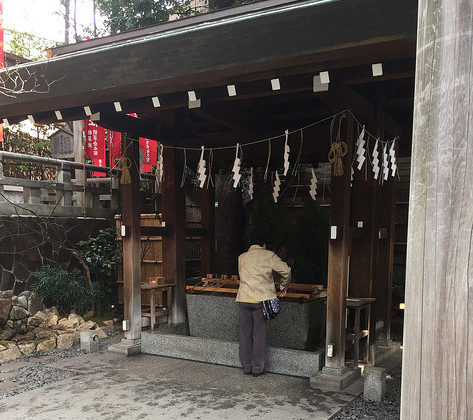Just a 3-minute walk from Coto Academy, Tokyo Daijingu 東京大神宮 ( とうきょう だいじんぐ ) – located in Iidabashi – is one of the five “Major Shrines” of Tokyo, along with Meiji Jingu, Yasukuni Jinja, Hie Jinja, and Ohkunitama Jinja.
Today it is well known throughout Japan as a lucky place to pray for blessings in your love life. It is popular with couples who want to stay together and singles who want to find a lover.
The History of Tokyo Daijingu
During the Edo Period (1603-1867) it was the wish of every common civilian in Japanese society to travel on an Okage Mairi – お蔭参り or “Blessing Pilgrimage” to the Grand Shrine of Ise in Mie prefecture Japan.
The Grand Shrine of Ise is dedicated to Amaterasu-ōmikami (天照大神/天照大御神/天照皇大神), or Ōhirume-no-muchi-no-kami (大日孁貴神) – or simply Amaretsu if you wan’t a convenient way to shorten it.
Amaretsu is the goddess of Sun and the Universe – and a major deity in the Shinto religion. According to the Kojiki and Nihon Shoki in Japanese mythology, the Emperors of Japan are considered to be direct descendants of Amaterasu. (quoted from Wikipedia).
It is recorded that in 1771 over 2 Million people made the pilgrimage to the grand shrine of Ise in Mie. (That would be similar to around 30 million Americans visiting Disney world or the grand Canyon today – about 10% of the total population).
In 1880, the Imperial family decided to approve the enshrinement of Amaretsu in Hibiya so that others could worship at a satellite campus without having to make the pilgrimage to Mie.

Quick Facts About History of Tokyo Daijingu
- Originally Located in Hibiya with the name Hibiya Daijingu
- Built in 1880
- Relocated to Iidabashi in 1924 after the great Kanto Earthquake & Renamed Iidabashi Daijingu
- Following the 2nd World War – Changed its name to “Tokyo Daijingu”
Back to Top
Why did it become popular with Lovers?
In 1900, Emperor Taisho married Empress Teimei in a first of its kind Shinto ceremony within the Imperial Shinto Shrine. Following this – Hibiya Daijingu performed the first public Shinto wedding ceremony.
After the great Kanto earthquake – Hibiya Daijingu was relocated to Iidabashi – but because of its heritage it retained the prestige of being the originator of Shinto wedding ceremonies for the public.
Additionally, there are several other deities enshrined here that are responsible for the growth of humans and their flourishing – which includes the health of their marriages.

Today – the shrine is known for its wide selection of love themed charms – which include different uses such as to ensure matchmaking in love as well as to promote the success of romantic relationships – making it quite popular with single women who are looking for love.
It is also a highly sought after venue for shinto weddings.

Back to Top
Etiquette – How to purify yourself when entering Tokyo Daijingu

If you have ever visited a Shinto shrine – you may have seen a water fountain with wooden ladles like the one above.
This is called a chōzubachi (手水鉢) and is an important part of any shrine visit.
If there is no one waiting or currently using – walk up to the chōzubachi (手水鉢) and do the following -\
(Note: After step five you have to put water in your mouth. It’s not required that you do this for good manners – but for the fully authentic experience – we recommend it!)
How to Purify Yourself – Entering a Shinto Shrine
- Take the wooden ladle with your right hand.
- Fill the ladle by holding it under the running water until about half full.
- Pour the “pure” water over your left hand – make sure you cover all of your skin.
- Now take the ladle into your left hand – refill it half way – and “purify” your right hand by doing the same.
- Switch hands again so that your right hand is now holding the ladle.
- Refill the ladle under the running water – then pour the “pure” water into your left hand.
- Drink the “pure” water from your left hand – and swish it around in your mouth – cleansing your mouth.
- Spit the water out onto the rocks and grass in front of the chōzubachi (手水鉢).
- Refill the ladle – then tip the handle down so that the “pure” water runs down the handle and your hands – “purifying” the ladle for the next user.
- Place the ladle back where you found it in the same position.
Helpful Tip: If you forget what to do, wait for a local and watch them. From there, follow their lead.

Back to Top
Hours and Location
Hours: 8:00 AM – 7:00 PM
Location: 2 Chome-4-1 Fujimi, Chiyoda-ku, Tōkyō-to 102-0071
Back to Top
Coto Japanese Academy is a Japanese Language School in Iidabashi, Tokyo that specializes in small group classes with conversation and speech focused lessons.
Interested in learning Japanese? Check out our courses by clicking below.